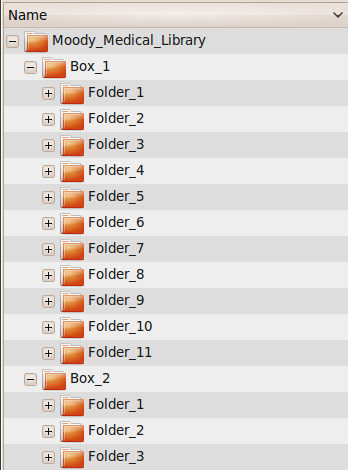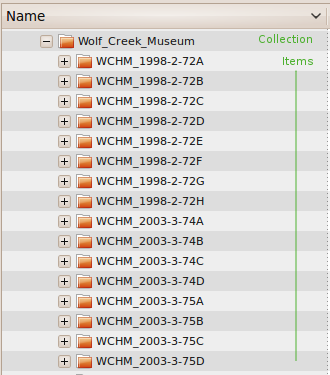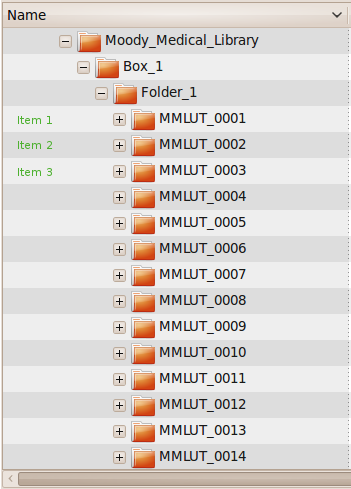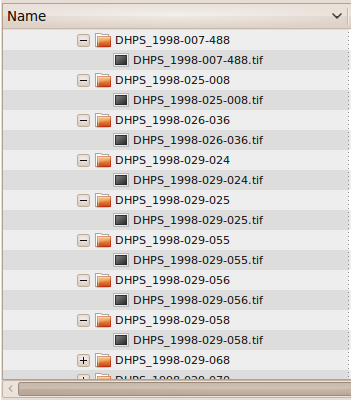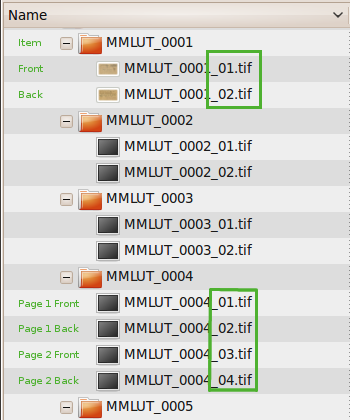Page Contents 3 minute read.
General Considerations
- In order to handle items properly, we have to know which images belong to a single item and the appropriate order for the files
- Most of the time an item is a single, obvious piece (e.g., a photograph)
- For non-standard items, a decision may have to be made about whether
pieces should be a single object or multiple objects, for example:
- A text with separate, non-published index
- A photograph inside (but not attached to) a program or pamphlet
- Images of multiple physical objects
- When making decisions about ordering images for non-standard items, remember that the first image will be the thumbnail for the item
Top-Level Organization
- Objects need to be grouped in logical ways depending on how they need to be handled
- Items may be grouped in ways that make sense based on how they are physically organized:
In this example, the collection’s items are numbered sequentially, but are arranged in folders which are inside boxes
(We usually prefer not to have many nested levels, but in this case, we needed a way to match the digital copies to the physical items while we were working on them, since the identifiers did not incorporate the box/folder numbers)
- Group like things together if you have multiple kinds of items, for
example:
- If you have text items and image items, make a “text” folder and an “image” folder
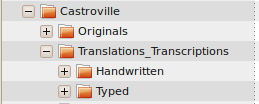
In this example, items are sorted by kinds of text because handwritten and typewritten items are processed differently
- Sometimes, all of the items may be “loose” in a collection folder
if:
- They are all the same kind of thing
- There are not enough of them to make divisions
- They are born-digital or do not have a physical grouping that is important
Item-Level Organization
- Regardless of top-level folder structures, you eventually need to separate individual items
- Always have 1 item per folder
- An item is a photograph, book, letter, or other kind of object
- Some items may have only 1 file (photographic negatives) or many files (books)
- Items are tracked by using unique identifiers
- Folders are named with the item’s unique identifier
- Each image of the item also uses the unique identifier
- For multiple images, append a sorting number to maintain the order of the pages or views of the image (_01, _02, etc.)
- Do not append sorting numbers if there is only one image for the item
In this example, the items are negatives and do not have multiple pages or views
- If an item has multiple images, the images should be in the order
that they should ultimately display
- For standard items, the first image is the front and the second is the back
- For items such as physical objects that have multiple views, try to place the images in a logical order
In this example, most of the items are a single page, but some have multiple pages
- For books or items with many images, the most important thing is to number the images so that they will sort in the correct order
